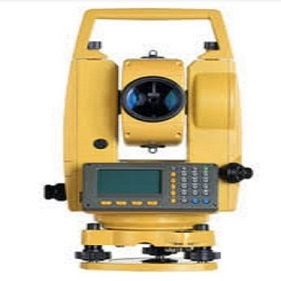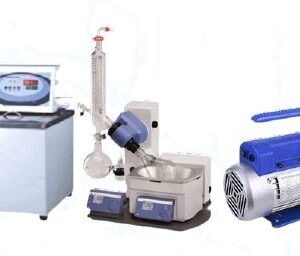ATM UNIVERSAL TESTING MACHINE
MAKE DINESH SCIENTIFIC
DESCRIPTION
Metals and other materials are tested under tension, compression, bending, transverse, and shear loads using the Universal Testing Machine, which is designed and manufactured. It is also possible to perform hardness tests on metals.
A sophisticated and specialized tool called an ATM Universal Testing Machine (UTM) is used to assess the dependability, security, and efficiency of Automated Teller Machines (ATMs). The use of this cutting-edge testing apparatus is essential to guaranteeing that ATMs adhere to legal and industry standards. Numerous testing tools, such as stress testing, security evaluations, and functionality testing, are available for the ATM UTM. Evaluating the ATM’s fundamental functions, such as cash dispensing, deposit processing, and card handling, is known as functionality testing. Security assessments make sure the ATM complies with the strictest security regulations by thoroughly analyzing its authentication procedures, encryption protocols, and general susceptibility to threats.
FEATURES :
- Varying the speed of the strain to accommodate different materials.
- Graphs from printers and PCs make it possible to examine how materials behave.
- Fast and effortless middle crosshead adjustment is made possible by motor-driven threaded columns, which enable test specimens fixed quickly.
- reading made easier with digital readouts.
- Many unique and standard accessories, such as load stabilisers.
- Simple conversion of plain specimens to threaded and screwed specimens.
- Both standard specimens and structures can be tested thanks to the large effective clearance between the columns.
- Easy to operate controls that are simple
- Sturdy ,incredibly rigid frame designed for straining.
- Safety devices guarantee a safe operating environment.
- Completely sealed and safeguarded pressure transducer.
- Data can be transferred to a computer via an RS-232 serial port for analysis, storage evaluation.
- Operation of the release valve and manual control.
- Corrosion resistance
- Sturdy construction
- noise free
- Longer service life
- Durable performance
PRINCIPLE OF OPERATION:
The machine operates by hydraulically transmitting the load from the test specimen to a load indicator that is housed separately. The hydraulic system is perfect because it transfers load without the need for levers or knife-edges, which can break or wear out easily from shock when test pieces burst. A ram that has been hydrostatically lubricated applies load. The pendulum dynamometer system’s cylinder, located in the control panel, receives pressure from the main cylinder. The dynamometer’s cylinder is also self-lubricating in design. Through a lever system, the load applied to the dynamometer’s cylinder is transferred to a pendulum. The load indicator pointer and the autographic recorder are operated by the rack and pinion mechanism, which is activated by the pendulum’s displacement.
STRAINING UNIT:
This is made up of a sturdy base supporting a hydraulic cylinder, a motor with a chain and sprocket drive, and a table attached to the hydraulic cylinder’s ram. To remove friction, the ram and the cylinder are lapped separately. Two straight columns firmly secure the upper cross-head to the table. Two motor-driven screwed columns are attached to the lower cross-head. By eliminating any potential side loading from the cylinder and ram through the use of ball seatings, axial loading of the ram is guaranteed. To quantify the specimen’s deformation, an elongation scale with a minimum graduation of 1 mm is offered. To perform a tension test, place your hands between your upper and lower
CONTROL PANEL:
- The control panel is made up of an autographic recorder, control valves, a load indicator system, a pendulum dynamometer, a power pack with a drive motor and an oil tank.
TECHNICAL DETAILS:
MODEL |
DS-UTM-1000 |
| Machine Type | Universal Testing Machine, Computerized |
| Capacity | 1000 kN |
| Structure | Hydraulic-jawed six-pillar type, comprising printer and computer |
| Loading Accuracy | ±1% of the indicating value |
| Strain Measurement | Variable speed for a wide range of materials, adjustable by manual control valve |
| Display | High reading accuracy, rugged digital display |
| Crosshead Movement | Motor-driven threaded columns for UP/DOWN movement of lower crosshead for quick change over of specimen, grips, and attachments |
| Jaw and Specimen Clamping | Operable through remote control |
| Grip Design | Front hydraulic wedge grips that are fully open for simple specimen entry and removal, increasing efficiency and security |
| LOADING UNIT | |
| Loading Unit | Mounted on a sturdy foundation, the hydraulic cylinder and piston has a lower table, middle crosshead, and higher crosshead. |
| Columns | Two or four strong chrome-plated columns support the upper crosshead and bottom table, while two threaded columns support the middle crosshead. |
| Height | Chain and sprockets attached to the bottom of threaded columns are driven by a reduction gear motor. |
| Cylinder and Ram | Individually lapped to eliminate friction |
| Axial Loading | Ensured by a ball seating under the lower table |
| Elongation Scale | Least count of 0.1 mm for measuring deformation of various samples |
| Tensile Test | Conducted by gripping test specimen between upper and middle crossheads |
| Compression, Transverse, Bending, Shear Tests | Conducted between the middle crosshead and lower table |
| HYDRAULIC SYSTEM | |
| Hydraulic System | Power pack with directly driven pump generating pressure of 300 kgf/cm² |
| Oil Flow | Continuous, non-pulsating oil flow for smooth load application |
| Flow Control Valve | A manually operated, pressure-compensated valve that allows for infinitely changeable oil flow for a steady straining rate |
| FOR COMPRESSION TEST | |
| Compression Plates | Pair of plates |
| Diameter of Circular Platen | 200 mm |
| FOR TRANSVERSE TEST | |
| Table with Adjustable Rollers | Yes |
| Width of Rollers | 160 mm |
| Diameter of Rollers | 50 mm |
| Max Clearance Between Supports | 600 mm |
| Radius of Punch Tops | 16 mm, 22 mm |
| Crosshead Geared Motor | 0.74 kW |
| Power Pack Motor | 2.2 kW |
| SOFTWARE FOR UTM | |
| Test Screen Display | · Displays load, displacement, and real-time graphs
· online graphs generated during tests |
| Graph Scaling | Scale selection for enhanced graph visibility |
| Extensometer Test Screen | Shows Load vs. Displacement, Load vs. Extension, and Stress vs. Strain graphs simultaneously |
| Database Management | Backup and restore facilities available |
| Report Generation | Automatic report generation in Crystal Reports, printable and exportable to Excel |
| Graph Customization | The user can specify the failure detection % and the graph line’s starting point. |
| Automatic Graph Scale Adjustment | During the test, the scale automatically adjusts as necessary. |
|
Real-Time Graph Display |
Displays Load vs. Displacement and Stress vs. Strain graphs in real-time |
| Report Printouts | Includes printout options for Load vs. Displacement,
Stress vs. Strain graphs, and test results |
| Data Analysis Options | Analyze reports with 0.2% & 0.5% proof stress lines |
| Overload Protection | Machine stops when predefined load is reached |
| Graphical Data Analysis | Mean Deviation, Frequency Distribution, Skew Diagram, Histogram |
| Extensometer | Electronic strain gauge type; 2.5 mm extension; gauge lengths of 25 mm and 50 mm |
| ELECTRONIC CONTROL PANEL | |
| Electronic Control Panel | A sealed, high-precision electronic control panel with a precise load cell installed in the loading unit |
| Data Acquisition System | transforms the pressure transducer’s analog output into digital measurements. |
| Load Measurement | Load cell measures mechanical load; rotary encoder measures linear displacement |
| Digital Indicator | Regulated power supply, excitation source, calibration port, signal conditioner, display, and keypad |
| Digital Panel Calibration | Calibrated to display load in kN and displacement in mm |
| Microprocessor-Based Panel | Includes precision load cell for load measurement and rotary encoder for crosshead positioning |
| Indications | Displacement/Extension indication, LAN card for PC interface, data entry for specimen dimensions, serial number, gauge length |
| Unit Selection | Load, displacement |
| Results | Load vs. Displacement Curve, Maximum Displacement, UTS, % Elongation, Young’s Modulus, Proof Stress (with Extensometer) |
| Accuracy | ±1% from 20% to full load range; maximum permissible error of 0.2% below 20% of range |
| LOAD RESOLUTION | |
| Load Resolution | 0.01 kN |
| Elongation Scale Resolution | 0.1 mm |
| Extensometer Resolution | 0.001 mm |
| Max Clearance for Tensile Test | 50 – 650 mm |
| Max Clearance for Compression Test | 0 – 650 mm |
| Clearance Between Columns | 600 mm |
| Ram Stroke | 200 mm |
| Straining/Piston Speed (No Load) | 0 – 100 mm |
| Tension Test Clamping Jaws (Round Specimens) | 8 – 16 mm / 20 – 40 mm / 40 – 60 mm |
| Tension Test Clamping Jaws (Flat Specimens) | Thickness: 0 – 40 mm |
| Flat Specimen Width | 100 mm |













Reviews
There are no reviews yet.